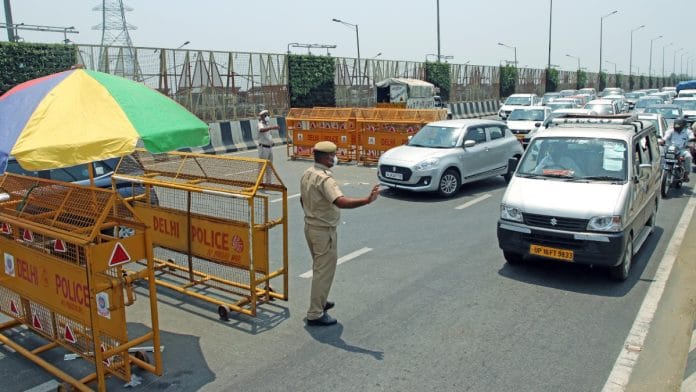New Delhi: The Supreme Court has pressed pause on the enforcement of a much‑debated restriction affecting older diesel and petrol vehicles in Delhi, passing an interim order against coercive action.
The bench, led by Chief Justice B.R. Gavai and joined by justices Vinod K. Chandran and N.V. Anjaria, ruled: “In the meantime no coercive steps to be taken against the owners of the car on the ground that they are 10 years old in respect to diesel vehicles and 15 years old with respect to petrol vehicles. List it after 4 weeks.”
The restriction on older vehicles isn’t a sudden development. It dates back to a 2015 directive by the National Green Tribunal (NGT), which sought to clear Delhi’s choking air by banning diesel vehicles older than 10 years and petrol vehicles older than 15. The Supreme Court had upheld this order in 2018.
While the intention was to reduce pollution, critics argue the approach has been too blunt. Now, as the court reconsiders the rule, there is renewed focus on creating a more scientific and balanced policy.
The interim order touches a nerve in Delhi-NCR’s ongoing environmental struggle—highlighting the clash between age-based restrictions and the push for smarter, evidence-led policies.
With the enforcement gap in the question, the question now is: can India shift gears from sweeping ban to cleaner, more scientific solutions?
“What we are missing in the debate is that the NGT mandated age-based limits back in 2014–15, and the Supreme Court reaffirmed them in 2018. The CAQM’s policy was never about penalizing owners of older vehicles—it was about enforcing court orders to protect public health. While age-based rules are a starting point, the real solution lies in identifying high emitters through real-world monitoring and acting on actual emissions data. For lasting progress, Delhi and other NCR states must transition to zero tailpipe emission vehicles—the only truly cleaner path forward,” Amit Bhatt of the International Council on Clean Transportation (ICCT) India told ThePrint.
Also Read: India’s crackdown on old cars faltering—graveyards of vehicles, loopholes in policy
Age isn’t always the problem
It’s a common misconception that a vehicle passing a fitness test is automatically clean and environmentally friendly.
“Fitness does not mean a clean vehicle. Because the fitness test tells you whether the vehicle is roadworthy or not. But a roadworthy vehicle may be emitting much higher emission. That fitness does not tell,” said Bhatt.
He emphasised that pollution can only be accurately assessed through proper emission checks or by referencing established emission standards.
“Delhi’s air quality is suffering and vehicles are one of the important causes. So, how do you transition to clean vehicles has to be acted upon on multiple fronts,” Bhatt said.
He proposed a two-fold solution: “Restricting old polluting vehicles is one. Second is, how do you move towards zero emission vehicles—that is the other part we’ll have to think a little more carefully.”
While experts stress the need for scientific testing and clearer standards, those on the ground highlight a glaring gap between policy and practice.
Gopal Krishan, who runs the Select Auto Scrapping Centre in Chandigarh, points to a ready-made solution that has long been overlooked.
He wonders why a proven solution—Automatic Testing Stations (ATS)—wasn’t introduced earlier. “This ATS should have been put in two years ago, which is the scheme of the government,” he said, pointing to the long-standing delays in implementing these modern testing systems.
For Krishan, these centres offer a fairer approach: let properly tested vehicles stay on the road and phase out only those that fail pollution checks. “The purpose is that the vehicle which is fit should go on the road and the vehicle which is unfit should not go. For that, ATS is the only solution.”
But his real frustration lies with enforcement. “The issue is about compliance in India. They don’t want to do compliance. But action should be taken immediately,” he said.
Rules exist, but without proper follow-through, they remain ineffective.
He warns that delay only worsens the problem, leaving more polluting vehicles free to roam the streets.
As concerns over enforcement persist, officials have assured that the Supreme Court’s directive will be implemented without delay.
“We will enforce the Supreme Court’s order and ensure that everything is carried out accordingly,” said Ajay Chaudhry, Special Commissioner of Police for the Traffic Management Division, Zone-II.
(Edited by Amrtansh Arora)
Also Read: Delhi’s new fuel policy is forcing people to buy new cars. It won’t reduce pollution






